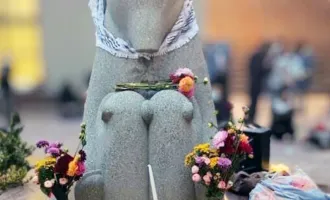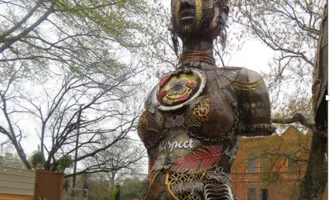
A Trainee’s Reflections of Anti-Asian Racism: Keep us in the Conversation
Only two-and-a-half years ago I was a third-year medical student completing my first clinical rotation when the news hit about the first COVID-19 cases. It was late February 2020 that I recall reflecting on my experiences beginning clinical training while walking in the park with a classmate.
On my left, a woman walked in our direction, passing us not three feet away, when I heard her say under her breath: “you’re too close to me.” It was one of multiple early experiences in the pandemic that I began to question if others viewed me as a vector of the virus.
On my next rotation in urgent care when I noted hesitancy from patients in receiving care from me, I attributed this to being a medical student, despite the implicit question of whether I was being judged on the basis of my racial identity. I found that the experience of “othering” returned on multiple other occasions in my medical education.
At the Veterans Hospital, I was regularly asked the all too familiar question of “where are you from” – never knowing if I was being asked about my race or ethnicity, or whether I was overthinking the question entirely.
In a more blatant example, a patient used his fingers to slant his eyes upward at me before attempting to crack a joke about the Tang dynasty (with which I have neither a shared last name nor connection).
As an Asian American woman in medicine, racist experiences are not new, and donning a white coat does not spare me from them.
Over two years after the initial COVID-19 cases in the U.S., I rotated through a free clinic as a fourth-year medical student and saw a middle-aged woman from the Philippines with poorly controlled diabetes complicated by retinopathy and cataracts.
I learned from our medical assistants that she had missed her initial ophthalmology appointment and then canceled her rescheduled appointment. With a history of missed appointments, the chances of successfully referring and rescheduling were slim.
As I gently probed her for why she had missed her appointments over the last year, she tearfully shared that she was too afraid to go outside alone after seeing the news of Asian elders being attacked on the street. I had no words to tell her that she need not be afraid, because I could not say them truthfully.
It is old news how hate crimes skyrocketed for Asian Americans after the start of the pandemic, yet the impacts of hate crimes persist even now. Medical school only did so much in teaching me how to prevent or address racial trauma outside of the clinical setting.
Strategies for combatting anti-Asian racism in a clinical setting have already been outlined: improving screening and awareness around race-based hate crimes and their mental health impacts, as well as providing resources from and mobilizing with community organizations.
Telehealth access with linguistic concordance to allow patients to receive medical care from home is necessary but does not solve fear and inherent issues of safety.
Beyond individual level anti-Asian racism, lacking an understanding of structural racism contributes to our inability to deliver optimal patient care and intervene on disparities.
Medical school curricula, residency programs, and hospital institutions have begun some of the work to recognize and address impacts of structural racism on patients, providers, and trainees alike.
In my first year of medical school, we had no mandatory curriculum on Asian health disparities. For Asian Americans, structural racism manifests as erasure, being lumped or omitted – lumped as a monolith of extraordinarily heterogeneous communities or omitted in discussions around disparities entirely.
The “model minority myth” eliminates the public’s perception of struggle and disparities within diverse Asian American communities and wedges us against other communities of color. It is no wonder we are often left out of diversity and inclusion conversations as a legacy of this erasure.
Nearly three years into the pandemic, the impacts of anti-Asian racism remain alive and well. If history has taught us anything about xenophobia in this country, community solidarity and galvanizing is crucial.
Providers need allyship training starting from early medical education and throughout medical training. Acknowledging that COVID-19 has disproportionately impacted Black and Brown communities of color is immensely important context for conversations about anti-Asian racism.
Understanding our shared histories of structural racism is key for coalition building and solidarity across communities. So please, keep us in the conversation.
Now nearing the end of medical school, my patients are now coming to see me as their doctor. Many Asian patients often come to me first in clinic, saying they feel safer and more comfortable with an Asian provider.
Part of my job is to make my patients feel safe, although having a medical degree or white coat does not make me immune to racism.
As my attendings push me to provide the best possible care and advise me to practice at the top of our license, I see part of the responsibility of earning a medical degree is leveraging its privilege and continuing to organize, knowing that still ahead of us we have our work to do.
I am blessed to be surrounded by folks and an institution who believe that our hardships are tied collectively to each other’s. But please remember, we are still your frontline providers, and we still face racism too.



